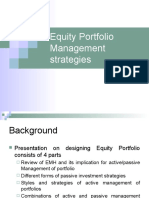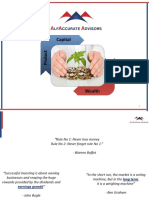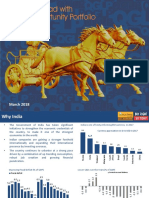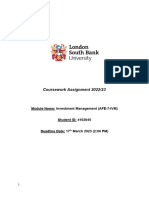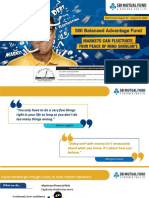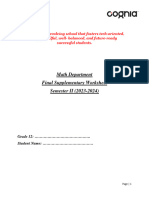0% found this document useful (0 votes)
70 views9 pagesVBRS Framework
Warren Buffett's investment strategy, often perceived as a 'buy and hold forever' approach, reveals a more active management style as he adjusts his portfolio based on market conditions, exemplified by his significant reduction of Apple shares. In contrast, Michael Burry employs a highly dynamic strategy, frequently reshuffling his portfolio based on macroeconomic indicators and valuation metrics. The document advocates for a Valuation-Based Reallocation Strategy that emphasizes data-driven decision-making to optimize returns while managing risk, suggesting that even long-term holdings should be evaluated regularly.
Uploaded by
Sourabh JainCopyright
© © All Rights Reserved
We take content rights seriously. If you suspect this is your content, claim it here.
Available Formats
Download as PDF, TXT or read online on Scribd
0% found this document useful (0 votes)
70 views9 pagesVBRS Framework
Warren Buffett's investment strategy, often perceived as a 'buy and hold forever' approach, reveals a more active management style as he adjusts his portfolio based on market conditions, exemplified by his significant reduction of Apple shares. In contrast, Michael Burry employs a highly dynamic strategy, frequently reshuffling his portfolio based on macroeconomic indicators and valuation metrics. The document advocates for a Valuation-Based Reallocation Strategy that emphasizes data-driven decision-making to optimize returns while managing risk, suggesting that even long-term holdings should be evaluated regularly.
Uploaded by
Sourabh JainCopyright
© © All Rights Reserved
We take content rights seriously. If you suspect this is your content, claim it here.
Available Formats
Download as PDF, TXT or read online on Scribd
/ 9










